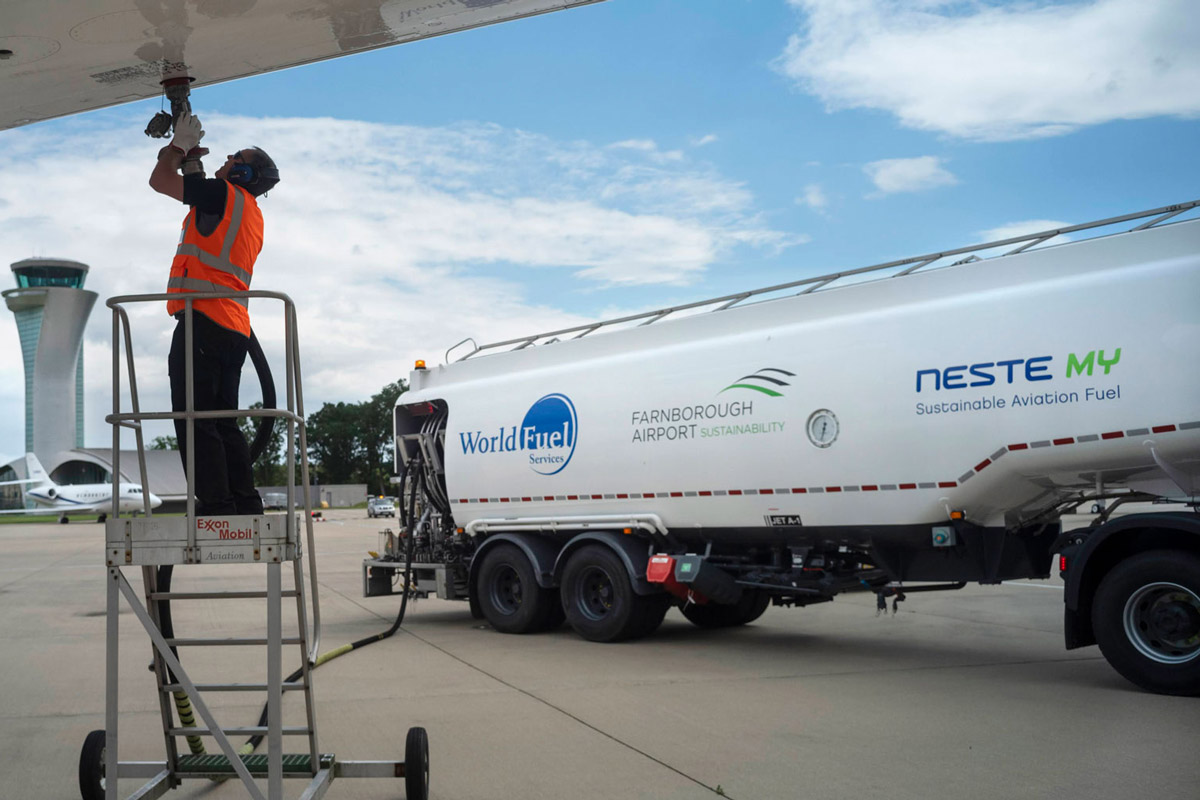Farnborough Airport, Europe’s leading airport for premium air travel connectivity and the home of British aviation, today launches its Net Zero Roadmap, establishing one of the most ambitious Net Zero targets in the aviation sector.

Titled, ‘Roadmap to Net Zero by 2030 – Where will you be?’, the Farnborough Airport Company is committing to be Net Zero across its controllable emissions by 2030 or sooner. This will result in a 91% reduction of those emissions. As part of the launch, ahead of this summer’s globally renowned 2022 Farnborough International Airshow, Farnborough Airport will be the first airport in the world to offer Sustainable Aviation Fuel (SAF) – which can reduce life cycle CO2 emissions by up to 80% – at the same price as standard Jet A1 fuel for a trial period from 1st July to the beginning of the Airshow.
As the largest business aviation airport in the UK and having become the first in the world to achieve carbon neutrality in 2018, Farnborough Airport is progressing its strategy to become a global showcase for airport sustainability through the launch of its Net Zero Roadmap, as Farnborough Airport CEO Simon Geere explains: “When it comes to supporting the decarbonisation of the aviation industry, we want to lead the way at Farnborough Airport, which is why we have set ourselves one of the most ambitious targets in the industry, by committing to be Net Zero across our controllable emissions by 2030 or sooner. Put simply, we want our customers to increasingly choose Farnborough Airport because of our sustainability credentials, alongside our market leading state-of-the-art facilities and our exceptional levels of customer care.”
The Roadmap outlines Farnborough Airport’s commitment to be Net Zero for its controllable emissions by 2030 and a pathway to do so. This covers the reduction of emissions from buildings, the airfield and on-site operational vehicles. By 2035, It has also committed to targeting a reduction of its controllable emissions and those it has partial influence over by over 40%. This includes emissions from the landing and take-off (LTO) cycle of aircraft up to 3,000 feet, and surface access emissions generated by passenger journeys to and from the airport.
Farnborough Airport first introduced SAF at the airport 12 months ago. Its increasing availability and demand are key component for reducing emissions generated by aircraft activity. At present, SAF production and purchase costs are a significant hurdle to its wholesale adoption across the aviation industry. As part of its Net Zero Roadmap launch, Farnborough Airport is putting the spotlight on the importance of reducing the costs of SAF and signalling its intent to be a catalyst for change across the wider aviation industry.
“We know where we want to be,” Geere explains. “We want to continue to be the premier business aviation airport in the world, building upon our historic and pioneering legacy. We also want to set the benchmark for environmental performance within our sector. We are on a journey to be Net Zero by 2030 or sooner, where will you be?”

